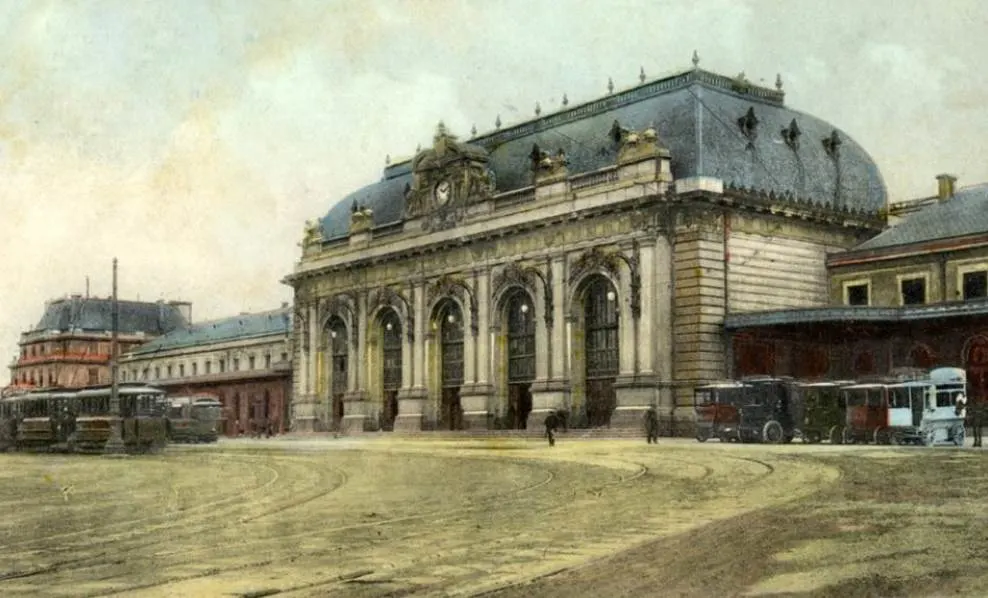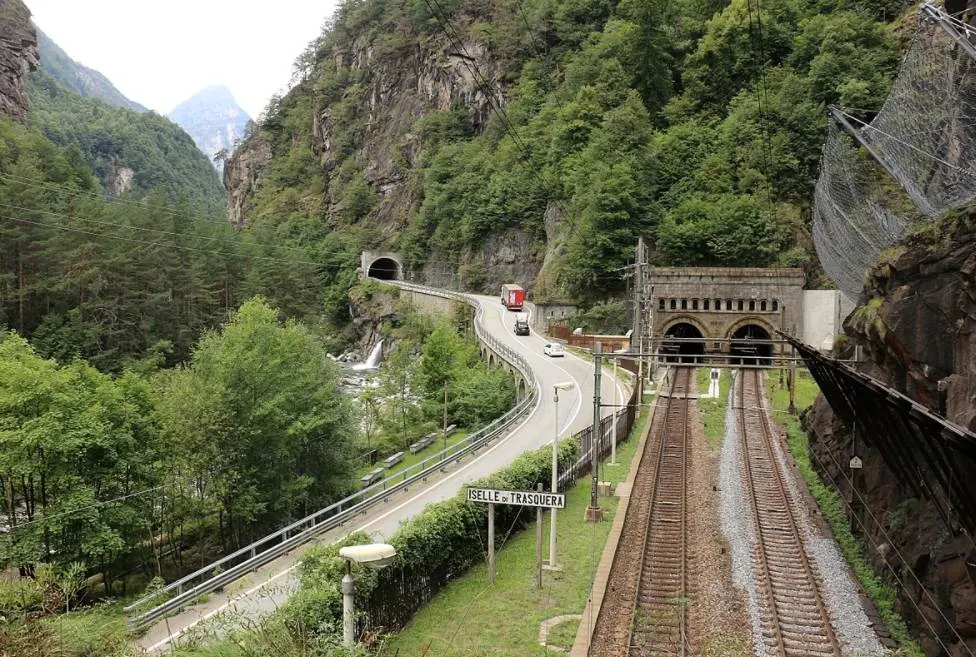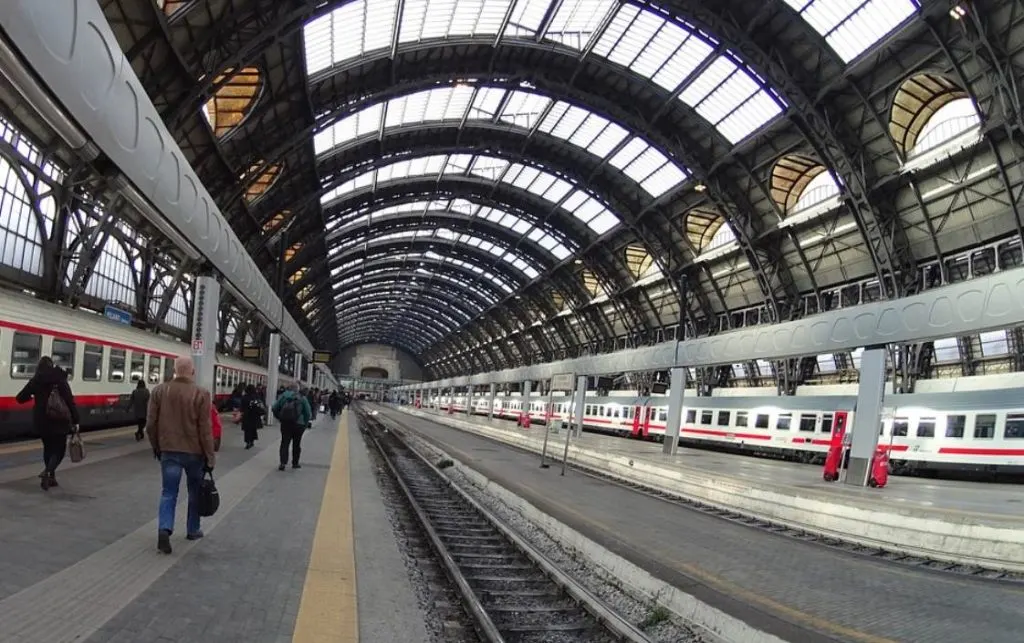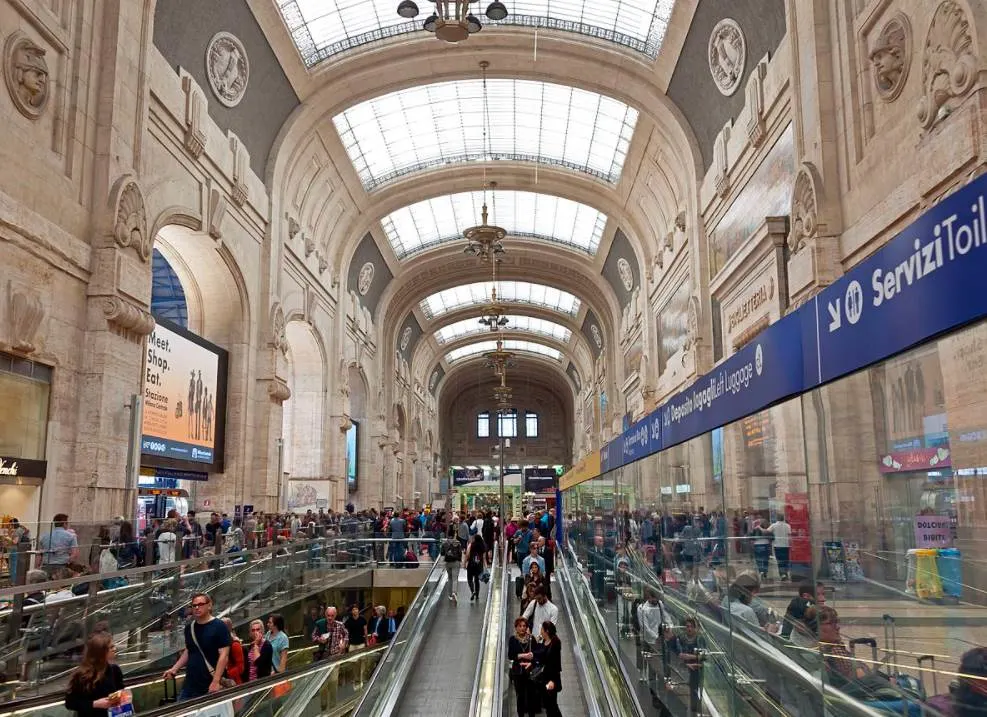The second-most populous city in Italy is home to one of the greatest train stations you’ll ever come across. Its architectural design impresses visitors from all around the world who arrive here from cities from all across Europe.
In this article, you’ll discover some of the most interesting facts about Milano Centrale, one of the most beautiful and busiest railway stations in Europe.
1. It’s located just northeast of the historical heart of Milan
Milano Centrale is the main railway station in Milan, the capital of the Lombardy region in northern Italy and the second-most populous city in the country. It’s also a popular tourist destination which means the main station in the city is a very busy place.
It’s located just northeast of the historical heart of the city, and with that, we mean the most famous landmark in the city, Milan Cathedral, the incredible Gothic cathedral around which the modern city was built.
The station is located just within the boundaries of the ring road that encircles the city center. This means it’s pretty close to all the most popular tourist attractions as well.

2. It replaced a much older railway station in the city
The main train station in Milan was only constructed in the first decades of the 20th century, but that doesn’t mean that Milan wasn’t served by railway stations before that. Some of these included the Porta Tosa station and the Porta Nuova station which opened in 1846 and 1850 respectively.
The current station is the second version of a train station referred to as “Milano Centrale.” The original station was located on what is now the “Piazza della Repubblica,” just south of the current building.
This building opened in 1864 and wasn’t a small station either. It was designed by French architect Louis-Jules Bouchot, a man who also designed the train station in Nice, southern France, at the time.
It resembled the monumental buildings that were constructed in Paris in the 19th century and remained operational until 1931. Today, not a single trace of this train station can be found, quite remarkable.

3. The station was built because of the completion of a huge tunnel

Although the old train station appears to be a huge structure that could handle quite a bit of passenger every day, it became insufficient in the early 20th century because of a specific reason.
In 1906, a railway tunnel called the “Simplon Tunnel” was completed which provides a shortcut from Italy to Switzerland. This pretty much opened the floodgates to trains from the northern part of Europe, especially Germany.
This railway tunnel had a length of 19,803 meters (64,970 feet) which made it the longest railway tunnel in the world for most of the 20th century.

4. The cornerstone was laid 6 years before a design was chosen
The Simplon Tunnel was completed in the year 1906 and this was quickly followed by a remarkable event in the history of the train station.
For some reason, King Victor Emmanuel III of Italy wanted to lay the cornerstone of the new station before there was a design, let alone a plan was created. This happened on April 28, 1906.
It wasn’t until the year 1912 that an architectural design competition was held and a design for the building was chosen, quite a remarkable way to handle things.

5. The design of the station was based on a famous station in the U.S.
The architectural design competition was won by a Florentine architect named Ulisse Stacchini (1871-1947). He only designed two buildings worth mentioning and these are two of the most amazing landmarks in Italy, Milano Centrale and San Siro, the iconic football stadium in the city.
The grandiose building was modeled on one of the most famous train stations in the United States, Washington Union Station in Washington, DC.
This is one of the busiest railway stations in the United States and it opened its doors in 190, just before the architectural competition for the station in Milan was held.

6. The fascist Prime Minister of Italy had a hand in the design as well
The eclectic structure didn’t have a defined design which allowed for some wiggle room. The construction was halted during World War I and progress was overall slow.
This was noticed by a man who became the Prime Minister of Italy in 1922 and eventually the fascist dictator of the country, Benito Mussolini (1883-1945). He envisioned a monumental structure that emphasized the power of the Fascist regime to everybody who arrived in Italy.
The two major changes he made were new revolutionary platforms that are covered with enormous steel canopies. These platforms are 341 meters (1,119 feet) long and cover an area of 66,500 square meters (716,000 square feet).

7. The structure was completed 19 years after the construction started
The final construction phase of the station, after Mussolini had his say in the ultimate design, was completed between 1925 and 1931.
The official opening of the station happened on July 1, 1931. Mussolini himself was too busy at the time to witness this event but his son-in-law, Foreign Minister Galeazzo Ciano, did make it to the opening.
The building is enormous as its façade has a width of 200 meters (660 feet) and the enormous vault reaches a height of 72 meters (236 feet).

8. Milano Centrale is one of the busiest train stations in Europe
The station’s main purpose is to connect the city of Milan to all major cities in Italy and Europe. It has 24 platforms and accommodates about 330,000 travelers per day, an incredible number.
With an estimated count of approximately 120 million passengers every year, it’s also one of the top 10 busiest train stations in Europe. It’s also the second-busiest station in Italy as only “Roma Termini” welcomes more people with 150 million passengers a year.
So what’s the busiest train station in Europe? The Gare du Nord in Paris with nearly 300 million passengers every year!

